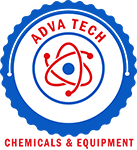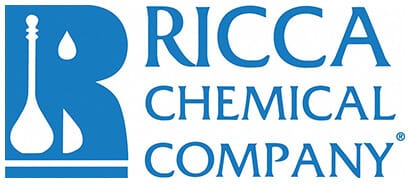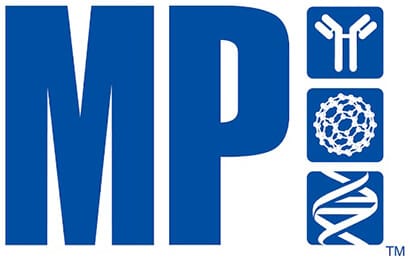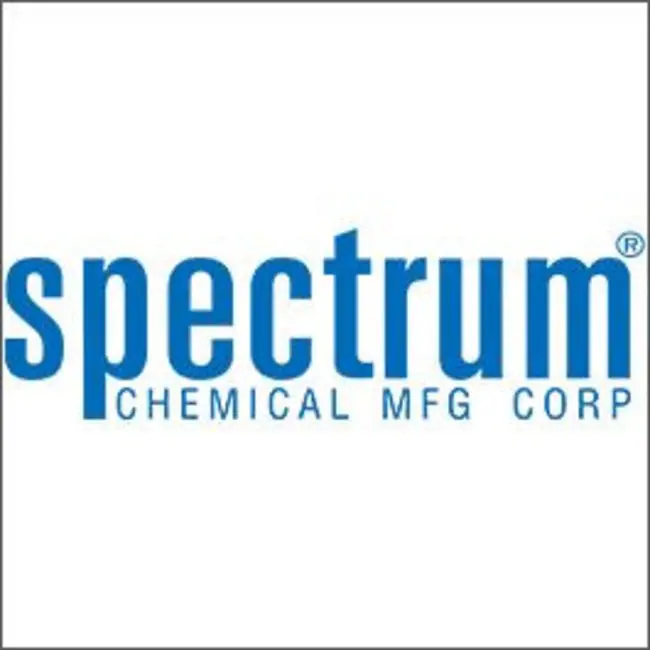Showing 17251–17300 of 36244 results
-
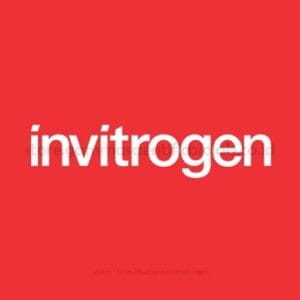
InvitrogenVEGF-165 Polyclonal Antibody, Biotin, PeproTech®
$449.85 Add to cart View Product DetailsnnAA Sequence of recombinant protein: APMAEGGGQN HHEVVKFMDV YQRSYCHPIE TLVDIFQEYP DEIEYIFKPS CVPLMRCGGC CNDEGLECVP TEESNITMQI MRIKPHQGQH IGEMSFLQHN KCECRPKKDR ARQENPCGPC SERRKHLFVQ DPQTCKCSCK NTDSRCKARQ LELNERTCRC DKPRR.
Preparation: Produced from sera of rabbits immunized with highly pure Recombinant Human VEGF 165. Anti-Human VEGF 165-specific antibody was purified by affinity chromatography and then biotinylated.
Sandwich ELISA: To detect Human VEGF 165 by sandwich ELISA (using 100 µL/well antibody solution) a concentration of 0.25-1.0 µg/mL of this antibody is required. This biotinylated polyclonal antibody, in conjunction with PeproTech Polyclonal Anti-Human VEGF 165 (500-P10) as a capture antibody, allows the detection of at least 0.2-0.4 ng/well of Recombinant Human VEGF 165.
Western Blot: To detect hVEGF by Western Blot analysis this antibody can be used at a concentration of 0.1-0.2 µg/mL. Used in conjunction with compatible secondary reagents the detection limit for Recombinant hVEGF is 1.5-3.0 ng/lane, under either reducing or non-reducing conditions.Target Information
VEGF (vascular endothelial growth factor) which is a 45 kDa homodimeric, disulfide-linked glycoprotein involved in angiogenesis which promotes tumor progression and metastasis. VEGF has a variety of effects on vascular endothelium, including the ability to promote endothelial cell viability, mitogenesis, chemotaxis, and vascular permeability. The VEGF family currently includes VEGF-A, VEGF-B, VEGF-C, VEGF-D, VEGF-E, and PIGF. VEGF and its receptor system have been shown to be the fundamental regulators in the cell signaling of angiogenesis. Most tumors have the absolute requirement of angiogenesis, and VEGF has been described as the most potent angiogenic cytokine linked to this process. To date 5 different isoforms of VEGF have been described. These isoforms are generated as the result of alternative splicing from a single VEGF gene. These various isoforms have been shown to bind to two tyrosine-kinase receptors flt-1 (VEGFR-1) and flk-1/KDR (VEGFR-2), which have been found to be expressed almost exclusively on endothelial cells. VEGF and its high-affinity binding receptors, the tyrosine kinases FLK1 and FLT1, are thought to be important for the development of embryonic vasculature. Studies have shown that an alternately spliced form of FLT1 produces a soluble protein, termed sFLT1, which binds vascular endothelial growth factor with high affinity, playing an inhibitory role in angiogenesis. Elevated levels of VEGF is linked to POEMS syndrome (Polyneuropathy, Organomegaly, Endocrinopathy, Monoclonal gammopathy, Skin changes) also known as Crow-Fukase syndrome which affects multiple organs in the body.
-

InvitrogenVEGF-165 Polyclonal Antibody, Biotin, PeproTech®
$449.85 Add to cart View Product DetailsSequence of recombinant protein: APMAEGGGQN HHEVVKFMDV YQRSYCHPIE TLVDIFQEYP DEIEYIFKPS CVPLMRCGGC CNDEGLECVP TEESNITMQI MRIKPHQGQH IGEMSFLQHN KCECRPKKDR ARQENPCGPC SERRKHLFVQ DPQTCKCSCK NTDSRCKARQ LELNERTCRC DKPRR.
Preparation: Produced from sera of goats immunized with highly pure Recombinant Human VEGF 165. Anti-Human VEGF 165-specific antibody was purified by affinity chromatography and then biotinylated.
Sandwich ELISA: To detect Human VEGF 165 by sandwich ELISA (using 100 µL/well antibody solution) a concentration of 0.25-1.0 µg/mL of this antibody is required. This biotinylated polyclonal antibody, in conjunction with PeproTech Polyclonal Anti-Human VEGF 165 (500-P10G) as a capture antibody, allows the detection of at least 0.2-0.4 ng/well of Recombinant Human VEGF 165.
Western Blot: To detect hVEGF by Western Blot analysis this antibody can be used at a concentration of 0.1-0.2 µg/mL. Used in conjunction with compatible secondary reagents the detection limit for Recombinant hVEGF is 1.5-3.0 ng/lane, under either reducing or non-reducing conditions.Target Information
VEGF (vascular endothelial growth factor) which is a 45 kDa homodimeric, disulfide-linked glycoprotein involved in angiogenesis which promotes tumor progression and metastasis. VEGF has a variety of effects on vascular endothelium, including the ability to promote endothelial cell viability, mitogenesis, chemotaxis, and vascular permeability. The VEGF family currently includes VEGF-A, VEGF-B, VEGF-C, VEGF-D, VEGF-E, and PIGF. VEGF and its receptor system have been shown to be the fundamental regulators in the cell signaling of angiogenesis. Most tumors have the absolute requirement of angiogenesis, and VEGF has been described as the most potent angiogenic cytokine linked to this process. To date 5 different isoforms of VEGF have been described. These isoforms are generated as the result of alternative splicing from a single VEGF gene. These various isoforms have been shown to bind to two tyrosine-kinase receptors flt-1 (VEGFR-1) and flk-1/KDR (VEGFR-2), which have been found to be expressed almost exclusively on endothelial cells. VEGF and its high-affinity binding receptors, the tyrosine kinases FLK1 and FLT1, are thought to be important for the development of embryonic vasculature. Studies have shown that an alternately spliced form of FLT1 produces a soluble protein, termed sFLT1, which binds vascular endothelial growth factor with high affinity, playing an inhibitory role in angiogenesis. Elevated levels of VEGF is linked to POEMS syndrome (Polyneuropathy, Organomegaly, Endocrinopathy, Monoclonal gammopathy, Skin changes) also known as Crow-Fukase syndrome which affects multiple organs in the body.
-
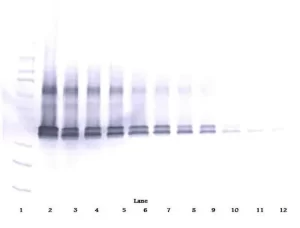
InvitrogenVEGF-165 Polyclonal Antibody, Biotin, PeproTech®
$449.85 Add to cart View Product DetailsnnAA Sequence of recombinant protein: MAPTTEGEQK SHEVIKFMDV YQRSYCRPIE TLVDIFQEYP DEIEYIFKPS CVPLMRCAGC CNDEALECVP TSESNITMQI MRIKPHQSQH IGEMSFLQHS RCECRPKKDR TKPEKHCEPC SERRKHLFVQ DPQTCKCSCK NTDSRCKARQ LELNERTCRC DKPRR.
Preparation: Produced from sera of rabbits immunized with highly pure Recombinant Murine VEGF 165. Anti-Murine VEGF 165-specific antibody was purified by affinity chromatography and then biotinylated.
Sandwich ELISA: To detect Murine VEGF 165 by sandwich ELISA (using 100 µL/well antibody solution) a concentration of 0.25-1.0 µg/mL of this antibody is required. This biotinylated polyclonal antibody, in conjunction with PeproTech Polyclonal Anti-Murine VEGF 165 (500-P131) as a capture antibody, allows the detection of at least 0.2-0.4 ng/well of Recombinant Murine VEGF 165.
Western Blot: To detect mVEGF by Western Blot analysis this antibody can be used at a concentration of 0.1-0.2 µg/mL. Used in conjunction with compatible secondary reagents the detection limit for Recombinant mVEGF is 1.5-3.0 ng/lane, under either reducing or non-reducing conditions.Target Information
VEGF (vascular endothelial growth factor) which is a 45 kDa homodimeric, disulfide-linked glycoprotein involved in angiogenesis which promotes tumor progression and metastasis. VEGF has a variety of effects on vascular endothelium, including the ability to promote endothelial cell viability, mitogenesis, chemotaxis, and vascular permeability. The VEGF family currently includes VEGF-A, VEGF-B, VEGF-C, VEGF-D, VEGF-E, and PIGF. VEGF and its receptor system have been shown to be the fundamental regulators in the cell signaling of angiogenesis. Most tumors have the absolute requirement of angiogenesis, and VEGF has been described as the most potent angiogenic cytokine linked to this process. To date 5 different isoforms of VEGF have been described. These isoforms are generated as the result of alternative splicing from a single VEGF gene. These various isoforms have been shown to bind to two tyrosine-kinase receptors flt-1 (VEGFR-1) and flk-1/KDR (VEGFR-2), which have been found to be expressed almost exclusively on endothelial cells. VEGF and its high-affinity binding receptors, the tyrosine kinases FLK1 and FLT1, are thought to be important for the development of embryonic vasculature. Studies have shown that an alternately spliced form of FLT1 produces a soluble protein, termed sFLT1, which binds vascular endothelial growth factor with high affinity, playing an inhibitory role in angiogenesis. Elevated levels of VEGF is linked to POEMS syndrome (Polyneuropathy, Organomegaly, Endocrinopathy, Monoclonal gammopathy, Skin changes) also known as Crow-Fukase syndrome which affects multiple organs in the body.
-

InvitrogenVEGF-165 Polyclonal Antibody, Biotin, PeproTech®
$449.85 Add to cart View Product DetailsnnAA Sequence of recombinant protein: MAPTTEGEQK AHEVVKFMDV YQRSYCRPIE TLVDIFQEYP DEIEYIFKPS CVPLMRCAGC CNDEALECVP TSESNVTMQI MRIKPHQSQH IGEMSFLQHS RCECRPKKDR TKPEKHCEPC SERRKHLFVQ DPQTCKCSCK NTDSRCKARQ LELNERTCRC DKPRR.
Preparation: Produced from sera of rabbits immunized with highly pure Recombinant Rat VEGF 165. Anti-Rat VEGF 165-specific antibody was purified by affinity chromatography and then biotinylated.
Sandwich ELISA: To detect Rat VEGF by sandwich ELISA (using 100 µL/well antibody solution) a concentration of 0.25-1.0 µg/mL of this antibody is required. This biotinylated polyclonal antibody, in conjunction with PeproTech Polyclonal Anti-Rat VEGF (500-P275) as a capture antibody, allows the detection of at least 0.2-0.4 ng/well of Recombinant Rat VEGF.
Western Blot: To detect Rat VEGF by Western Blot analysis this antibody can be used at a concentration of 0.1-0.2 µg/mL. Used in conjunction with compatible secondary reagents the detection limit for Recombinant Rat VEGF is 1.5-3.0 ng/lane, under either reducing or non-reducing conditions.Target Information
VEGF (vascular endothelial growth factor) which is a 45 kDa homodimeric, disulfide-linked glycoprotein involved in angiogenesis which promotes tumor progression and metastasis. VEGF has a variety of effects on vascular endothelium, including the ability to promote endothelial cell viability, mitogenesis, chemotaxis, and vascular permeability. The VEGF family currently includes VEGF-A, VEGF-B, VEGF-C, VEGF-D, VEGF-E, and PIGF. VEGF and its receptor system have been shown to be the fundamental regulators in the cell signaling of angiogenesis. Most tumors have the absolute requirement of angiogenesis, and VEGF has been described as the most potent angiogenic cytokine linked to this process. To date 5 different isoforms of VEGF have been described. These isoforms are generated as the result of alternative splicing from a single VEGF gene. These various isoforms have been shown to bind to two tyrosine-kinase receptors flt-1 (VEGFR-1) and flk-1/KDR (VEGFR-2), which have been found to be expressed almost exclusively on endothelial cells. VEGF and its high-affinity binding receptors, the tyrosine kinases FLK1 and FLT1, are thought to be important for the development of embryonic vasculature. Studies have shown that an alternately spliced form of FLT1 produces a soluble protein, termed sFLT1, which binds vascular endothelial growth factor with high affinity, playing an inhibitory role in angiogenesis. Elevated levels of VEGF is linked to POEMS syndrome (Polyneuropathy, Organomegaly, Endocrinopathy, Monoclonal gammopathy, Skin changes) also known as Crow-Fukase syndrome which affects multiple organs in the body.
-

InvitrogenVEGF-165 Polyclonal Antibody, PeproTech®
$366.95 Add to cart View Product DetailsnnAA Sequence of recombinant protein: APMAEGGGQN HHEVVKFMDV YQRSYCHPIE TLVDIFQEYP DEIEYIFKPS CVPLMRCGGC CNDEGLECVP TEESNITMQI MRIKPHQGQH IGEMSFLQHN KCECRPKKDR ARQENPCGPC SERRKHLFVQ DPQTCKCSCK NTDSRCKARQ LELNERTCRC DKPRR.
Preparation: Produced from sera of rabbits immunized with highly pure Recombinant Human VEGF 165. Anti-Human VEGF 165-specific antibody was purified by affinity chromatography employing an immobilized Human VEGF 165 matrix.
Sandwich ELISA: To detect Human VEGF 165 by sandwich ELISA (using 100 µL/well antibody solution) a concentration of 0.5-2.0 µg/mL of this antibody is required. This antigen affinity purified antibody, in conjunction with PeproTech Biotinylated Anti-Human VEGF 165 (500-P10Bt) as a detection antibody, allows the detection of at least 0.2-0.4 ng/well of Recombinant Human VEGF 165.
Western Blot: To detect Human VEGF 165 by Western Blot analysis this antibody can be used at a concentration of 0.1-0.2 µg/mL. Used in conjunction with compatible secondary reagents the detection limit for Recombinant Human VEGF 165 is 1.5-3.0 ng/lane, under either reducing or non-reducing conditions.Target Information
VEGF (vascular endothelial growth factor) which is a 45 kDa homodimeric, disulfide-linked glycoprotein involved in angiogenesis which promotes tumor progression and metastasis. VEGF has a variety of effects on vascular endothelium, including the ability to promote endothelial cell viability, mitogenesis, chemotaxis, and vascular permeability. The VEGF family currently includes VEGF-A, VEGF-B, VEGF-C, VEGF-D, VEGF-E, and PIGF. VEGF and its receptor system have been shown to be the fundamental regulators in the cell signaling of angiogenesis. Most tumors have the absolute requirement of angiogenesis, and VEGF has been described as the most potent angiogenic cytokine linked to this process. To date 5 different isoforms of VEGF have been described. These isoforms are generated as the result of alternative splicing from a single VEGF gene. These various isoforms have been shown to bind to two tyrosine-kinase receptors flt-1 (VEGFR-1) and flk-1/KDR (VEGFR-2), which have been found to be expressed almost exclusively on endothelial cells. VEGF and its high-affinity binding receptors, the tyrosine kinases FLK1 and FLT1, are thought to be important for the development of embryonic vasculature. Studies have shown that an alternately spliced form of FLT1 produces a soluble protein, termed sFLT1, which binds vascular endothelial growth factor with high affinity, playing an inhibitory role in angiogenesis. Elevated levels of VEGF is linked to POEMS syndrome (Polyneuropathy, Organomegaly, Endocrinopathy, Monoclonal gammopathy, Skin changes) also known as Crow-Fukase syndrome which affects multiple organs in the body.
-

InvitrogenVEGF-165 Polyclonal Antibody, PeproTech®
$366.95 Add to cart View Product DetailsnnAA Sequence of recombinant protein: APMAEGGGQN HHEVVKFMDV YQRSYCHPIE TLVDIFQEYP DEIEYIFKPS CVPLMRCGGC CNDEGLECVP TEESNITMQI MRIKPHQGQH IGEMSFLQHN KCECRPKKDR ARQENPCGPC SERRKHLFVQ DPQTCKCSCK NTDSRCKARQ LELNERTCRC DKPRR.
Preparation: Produced from sera of goats immunized with highly pure Recombinant Human VEGF 165. Anti-Human VEGF 165-specific antibody was purified by affinity chromatography employing an immobilized Human VEGF 165 matrix.
Sandwich ELISA: To detect Human VEGF 165 by sandwich ELISA (using 100 µL/well antibody solution) a concentration of 0.5-2.0 µg/mL of this antibody is required. This antigen affinity purified antibody, in conjunction with PeproTech Biotinylated Anti-Human VEGF 165 (500-P10GBt) as a detection antibody, allows the detection of at least 0.2-0.4 ng/well of Recombinant Human VEGF 165.
Western Blot: To detect Human VEGF 165 by Western Blot analysis this antibody can be used at a concentration of 0.1-0.2 µg/mL. Used in conjunction with compatible secondary reagents the detection limit for Recombinant Human VEGF 165 is 1.5-3.0 ng/lane, under either reducing or non-reducing conditions.Target Information
VEGF (vascular endothelial growth factor) which is a 45 kDa homodimeric, disulfide-linked glycoprotein involved in angiogenesis which promotes tumor progression and metastasis. VEGF has a variety of effects on vascular endothelium, including the ability to promote endothelial cell viability, mitogenesis, chemotaxis, and vascular permeability. The VEGF family currently includes VEGF-A, VEGF-B, VEGF-C, VEGF-D, VEGF-E, and PIGF. VEGF and its receptor system have been shown to be the fundamental regulators in the cell signaling of angiogenesis. Most tumors have the absolute requirement of angiogenesis, and VEGF has been described as the most potent angiogenic cytokine linked to this process. To date 5 different isoforms of VEGF have been described. These isoforms are generated as the result of alternative splicing from a single VEGF gene. These various isoforms have been shown to bind to two tyrosine-kinase receptors flt-1 (VEGFR-1) and flk-1/KDR (VEGFR-2), which have been found to be expressed almost exclusively on endothelial cells. VEGF and its high-affinity binding receptors, the tyrosine kinases FLK1 and FLT1, are thought to be important for the development of embryonic vasculature. Studies have shown that an alternately spliced form of FLT1 produces a soluble protein, termed sFLT1, which binds vascular endothelial growth factor with high affinity, playing an inhibitory role in angiogenesis. Elevated levels of VEGF is linked to POEMS syndrome (Polyneuropathy, Organomegaly, Endocrinopathy, Monoclonal gammopathy, Skin changes) also known as Crow-Fukase syndrome which affects multiple organs in the body.
-

InvitrogenVEGF-165 Polyclonal Antibody, PeproTech®
$381.01 Add to cart View Product DetailsnnAA Sequence of recombinant protein: MAPTTEGEQK SHEVIKFMDV YQRSYCRPIE TLVDIFQEYP DEIEYIFKPS CVPLMRCAGC CNDEALECVP TSESNITMQI MRIKPHQSQH IGEMSFLQHS RCECRPKKDR TKPEKHCEPC SERRKHLFVQ DPQTCKCSCK NTDSRCKARQ LELNERTCRC DKPRR.
Preparation: Produced from sera of rabbits immunized with highly pure Recombinant Murine VEGF 165. Anti-Murine VEGF 165-specific antibody was purified by affinity chromatography employing an immobilized Murine VEGF 165 matrix.
Sandwich ELISA: To detect Murine VEGF 165 by sandwich ELISA (using 100 µL/well antibody solution) a concentration of 0.5-2.0 µg/mL of this antibody is required. This antigen affinity purified antibody, in conjunction with PeproTech Biotinylated Anti-Murine VEGF 165 (500-P131Bt) as a detection antibody, allows the detection of at least 0.2-0.4 ng/well of Recombinant Murine VEGF 165.
Western Blot: To detect Murine VEGF 165 by Western Blot analysis this antibody can be used at a concentration of 0.1-0.2 µg/mL. Used in conjunction with compatible secondary reagents the detection limit for Recombinant Murine VEGF165 is 1.5-3.0 ng/lane, under either reducing or non-reducing conditions.Target Information
VEGF (vascular endothelial growth factor) which is a 45 kDa homodimeric, disulfide-linked glycoprotein involved in angiogenesis which promotes tumor progression and metastasis. VEGF has a variety of effects on vascular endothelium, including the ability to promote endothelial cell viability, mitogenesis, chemotaxis, and vascular permeability. The VEGF family currently includes VEGF-A, VEGF-B, VEGF-C, VEGF-D, VEGF-E, and PIGF. VEGF and its receptor system have been shown to be the fundamental regulators in the cell signaling of angiogenesis. Most tumors have the absolute requirement of angiogenesis, and VEGF has been described as the most potent angiogenic cytokine linked to this process. To date 5 different isoforms of VEGF have been described. These isoforms are generated as the result of alternative splicing from a single VEGF gene. These various isoforms have been shown to bind to two tyrosine-kinase receptors flt-1 (VEGFR-1) and flk-1/KDR (VEGFR-2), which have been found to be expressed almost exclusively on endothelial cells. VEGF and its high-affinity binding receptors, the tyrosine kinases FLK1 and FLT1, are thought to be important for the development of embryonic vasculature. Studies have shown that an alternately spliced form of FLT1 produces a soluble protein, termed sFLT1, which binds vascular endothelial growth factor with high affinity, playing an inhibitory role in angiogenesis. Elevated levels of VEGF is linked to POEMS syndrome (Polyneuropathy, Organomegaly, Endocrinopathy, Monoclonal gammopathy, Skin changes) also known as Crow-Fukase syndrome which affects multiple organs in the body.
-

InvitrogenVEGF-165 Polyclonal Antibody, PeproTech®
$351.69 Add to cart View Product DetailsProduct Specific Information
Sequence of recombinant protein: MAPTTEGEQK AHEVVKFMDV YQRSYCRPIE TLVDIFQEYP DEIEYIFKPS CVPLMRCAGC CNDEALECVP TSESNVTMQI MRIKPHQSQH IGEMSFLQHS RCECRPKKDR TKPEKHCEPC SERRKHLFVQ DPQTCKCSCK NTDSRCKARQ LELNERTCRC DKPRR.
Preparation: Produced from sera of rabbits immunized with highly pure Recombinant Rat VEGF 165. Anti-Rat VEGF 165-specific antibody was purified by affinity chromatography employing an immobilized Rat VEGF 165 matrix.
Sandwich ELISA: To detect Rat VEGF 165 by sandwich ELISA (using 100 µL/well antibody solution) a concentration of 0.5-2.0 µg/mL of this antibody is required. This antigen affinity purified antibody, in conjunction with PeproTech Biotinylated Anti-Rat VEGF 165 (500-P275Bt) as a detection antibody, allows the detection of at least 0.2-0.4 ng/well of Recombinant Rat VEGF 165.
Western Blot: To detect Rat VEGF 165 by Western Blot analysis this antibody can be used at a concentration of 0.1-0.2 µg/mL. Used in conjunction with compatible secondary reagents the detection limit for Recombinant Rat VEGF 165 is 1.5-3.0 ng/lane, under either reducing or non-reducing conditions.Target Information
VEGF (vascular endothelial growth factor) which is a 45 kDa homodimeric, disulfide-linked glycoprotein involved in angiogenesis which promotes tumor progression and metastasis. VEGF has a variety of effects on vascular endothelium, including the ability to promote endothelial cell viability, mitogenesis, chemotaxis, and vascular permeability. The VEGF family currently includes VEGF-A, VEGF-B, VEGF-C, VEGF-D, VEGF-E, and PIGF. VEGF and its receptor system have been shown to be the fundamental regulators in the cell signaling of angiogenesis. Most tumors have the absolute requirement of angiogenesis, and VEGF has been described as the most potent angiogenic cytokine linked to this process. To date 5 different isoforms of VEGF have been described. These isoforms are generated as the result of alternative splicing from a single VEGF gene. These various isoforms have been shown to bind to two tyrosine-kinase receptors flt-1 (VEGFR-1) and flk-1/KDR (VEGFR-2), which have been found to be expressed almost exclusively on endothelial cells. VEGF and its high-affinity binding receptors, the tyrosine kinases FLK1 and FLT1, are thought to be important for the development of embryonic vasculature. Studies have shown that an alternately spliced form of FLT1 produces a soluble protein, termed sFLT1, which binds vascular endothelial growth factor with high affinity, playing an inhibitory role in angiogenesis. Elevated levels of VEGF is linked to POEMS syndrome (Polyneuropathy, Organomegaly, Endocrinopathy, Monoclonal gammopathy, Skin changes) also known as Crow-Fukase syndrome which affects multiple organs in the body.
-
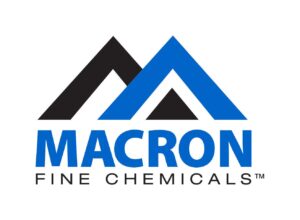
IODINE (N/10) VOLUMETRIC SOLUTION 4 L – MACR2962-07
$595.67 Add to cart View Product DetailsIODINE (N/10) VOLUMETRIC SOLUTION 4 L
-

IODINE (N/10) VOLUMETRIC SOLUTION 4 L – MACR2962-07, 4 L
$751.96 Add to cart View Product DetailsIODINE (N/10) VOLUMETRIC SOLUTION 4 L
-

IODINE 0.01 NRM SOL 1L – MACRH175-05, 1 L
$291.26 Add to cart View Product DetailsIODINE 0.01 NRM SOL 1L
-

IODINE 0.01 NRM SOL 1L – MACRH175-05, 1 L
$48.55 Add to cart View Product DetailsIODINE 0.01 NRM SOL 1L
-
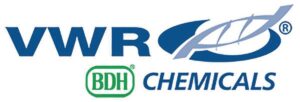
IODINE 0.01N 1L, 1 L
$490.48 Add to cart View Product DetailsIODINE 0.01N 1L
-

IODINE 0.01N 1L, 1 L
$82.98 Add to cart View Product DetailsIODINE 0.01N 1L
-

IODINE 0.01NRM SOL 4L – MACRH175-07, 4 L
$367.51 Add to cart View Product DetailsIODINE 0.01NRM SOL 4L
-

IODINE 0.01NRM SOL 4L – MACRH175-07, 4 L
$91.87 Add to cart View Product DetailsIODINE 0.01NRM SOL 4L
-

IODINE 0.0282 NRM SOL 1L – MACRH169-05, 1 L
$330.15 Add to cart View Product DetailsIODINE 0.0282 NRM SOL 1L
-

IODINE 0.0282 NRM SOL 1L – MACRH169-05, 1 L
$55.05 Add to cart View Product DetailsIODINE 0.0282 NRM SOL 1L
-

IODINE 0.028N 1L, 1 L
$383.35 Add to cart View Product DetailsIODINE 0.028N 1L
-

IODINE 0.028N 1L, 1 L
$63.89 Add to cart View Product DetailsIODINE 0.028N 1L
-

IODINE 0.1 NRM(N/10) SOL BOTTLE 1L – MACR2962-60, 1 L
$543.81 Add to cart View Product DetailsIODINE 0.1 NRM(N/10) SOL BOTTLE 1L
-

IODINE 0.1 NRM(N/10) SOL BOTTLE 1L – MACR2962-60, 1 L
$90.64 Add to cart View Product DetailsIODINE 0.1 NRM(N/10) SOL BOTTLE 1L
-
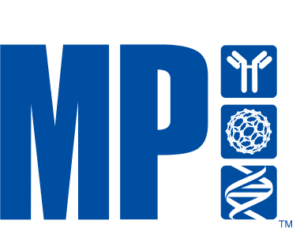
IODINE DEFICIENT DIET
$504.45 Add to cart View Product DetailsIODINE DEFICIENT DIET
-

IODINE DEFICIENT DIET
$876.40 Add to cart View Product DetailsIODINE DEFICIENT DIET
-

IODINE DEFICIENT DIET
$1,903.91 Add to cart View Product DetailsIODINE DEFICIENT DIET
1,655.57 -

IODINE DEFICIENT DIET
$539.73 Add to cart View Product DetailsIODINE DEFICIENT DIET
-

IODINE DEFICIENT DIET
$943.14 Add to cart View Product DetailsIODINE DEFICIENT DIET
-

IODINE DEFICIENT DIET
$2,050.17 Add to cart View Product DetailsIODINE DEFICIENT DIET
1,782.76 -

IODINE DIET, LOW
$469.04 Add to cart View Product DetailsIODINE DIET, LOW
-

IODINE DIET, LOW
$814.43 Add to cart View Product DetailsIODINE DIET, LOW
-

IODINE DIET, LOW
$1,762.23 Add to cart View Product DetailsIODINE DIET, LOW
1,532.37 -

IODINE DIET, LOW
$548.70 Add to cart View Product DetailsIODINE DIET, LOW
-

IODINE DIET, LOW
$960.47 Add to cart View Product DetailsIODINE DIET, LOW
-

IODINE DIET, LOW
$2,080.91 Add to cart View Product DetailsIODINE DIET, LOW
1,809.49 -

IODINE DIET, LOW
$730.19 Add to cart View Product DetailsIODINE DIET, LOW
-

IODINE DIET, LOW
$1,266.28 Add to cart View Product DetailsIODINE DIET, LOW
1,101.11 -

IODINE DIET, LOW
$2,758.33 Add to cart View Product DetailsIODINE DIET, LOW
2,398.55 -

IODINE DIET, LOW
$814.43 Add to cart View Product DetailsIODINE DIET, LOW
-

IODINE DIET, LOW
$1,412.40 Add to cart View Product DetailsIODINE DIET, LOW
1,228.17 -

IODINE DIET, LOW
$3,072.75 Add to cart View Product DetailsIODINE DIET, LOW
2,671.96 -

IODINE SOLUTION 0.025N 1L, 1 L
$310.58 Add to cart View Product DetailsIODINE SOLUTION 0.025N 1L
-

IODINE SOLUTION 0.025N 1L, 1 L
$51.80 Add to cart View Product DetailsIODINE SOLUTION 0.025N 1L
-

IODINE SOLUTION 0.1N 1L, 1 L
$313.04 Add to cart View Product DetailsIODINE SOLUTION 0.1N 1L
-

IODINE SOLUTION 0.1N 1L, 1 L
$52.18 Add to cart View Product DetailsIODINE SOLUTION 0.1N 1L
-

IODINE SOLUTION 0.1N 4L, 4 L
$655.98 Add to cart View Product DetailsIODINE SOLUTION 0.1N 4L
-

IODINE SOLUTION 0.1N 4L, 4 L
$171.94 Add to cart View Product DetailsIODINE SOLUTION 0.1N 4L
-
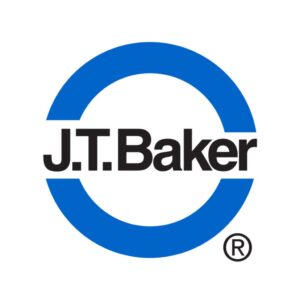
IODINE SOLUTION 0.1N BOTTLE 1L – BAKR5623-02, 1 L
$2,032.99 Add to cart View Product DetailsIODINE SOLUTION 0.1N BOTTLE 1L
-

IODINE SOLUTION 0.1N BOTTLE 1L – BAKR5623-02, 1 L
$338.84 Add to cart View Product DetailsIODINE SOLUTION 0.1N BOTTLE 1L
-

IODINE-MONOCHLR SOLUT 1LITER – MACRH180-05, 1 L
$441.39 Add to cart View Product DetailsIODINE-MONOCHLR SOLUT 1LITER
-

IODINE-MONOCHLR SOLUT 1LITER – MACRH180-05, 1 L
$73.57 Add to cart View Product DetailsIODINE-MONOCHLR SOLUT 1LITER
